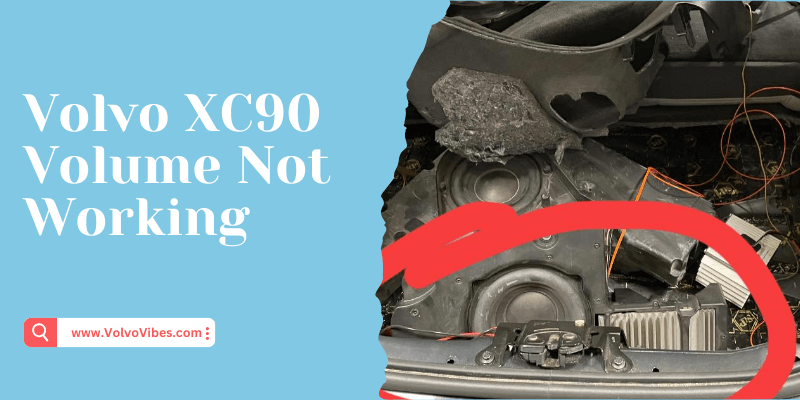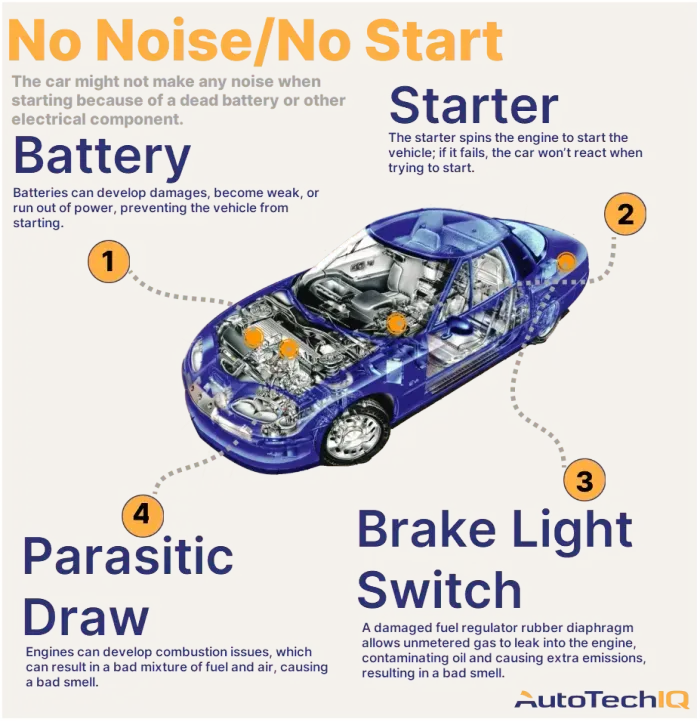Seeing the battery light on while driving can be alarming. This light signals a potential problem with your car’s electrical system.
Driving with the battery light on can lead to bigger issues if ignored. Your vehicle’s battery and charging system are crucial for operation. When the light comes on, it’s important to understand what it means and how to react. This guide will help you identify common causes and solutions.
Being informed can save you time and prevent costly repairs. So, let’s dive into understanding why this light comes on and what steps you can take to address it.

Credit: www.reddit.com
Causes Of Battery Light Activation
The battery light on your dashboard indicates an issue with the car’s charging system. Understanding the causes helps in fixing the problem quickly. Let’s explore the common causes of battery light activation.
Faulty Alternator
The alternator charges the battery while the engine runs. If it fails, the battery light will activate. A faulty alternator can’t supply enough power to the car’s electrical systems.
Signs of a faulty alternator include:
- Dim headlights
- Strange noises
- Electrical issues
A mechanic can test the alternator’s output. Replacing a faulty alternator restores the charging system.
Worn-out Battery
A worn-out battery can’t hold a charge. The battery light activates when the battery is weak. This often happens in older batteries.
Signs of a worn-out battery include:
- Slow engine start
- Corroded terminals
- Swollen battery case
Replacing the old battery with a new one solves the issue. Regular battery checks can prevent unexpected failures.
Immediate Actions To Take
Seeing the battery light while driving can be alarming. It indicates a problem with your car’s electrical system. Knowing what to do immediately can prevent further damage. Here are key steps to follow.
Pull Over Safely
First, find a safe place to pull over. Do this as soon as possible. Use your blinkers to signal other drivers. Avoid stopping on a busy road. Look for a parking lot or side street.
Turn Off Unnecessary Electronics
Next, turn off all unnecessary electronics. These include the radio, air conditioning, and any other non-essential devices. This helps conserve battery power. Your car needs as much power as possible to keep running.
Diagnosing The Problem
Seeing the battery light on while driving can mean a problem with your car’s charging system. It may involve the battery, alternator, or related parts. Prompt attention is necessary to avoid a breakdown.
When the battery light comes on while driving, it means trouble. Diagnosing the problem early prevents costly repairs. The following steps will help you understand the issue.Using A Multimeter
A multimeter is a handy tool. It measures voltage, current, and resistance. Start by setting the multimeter to DC voltage. Attach the red probe to the battery’s positive terminal. Place the black probe on the negative terminal. A healthy car battery should read between 12.6 and 12.8 volts when the engine is off. If the reading is below 12.4 volts, the battery might be weak. Next, start the engine. The voltage should rise to 13.7 to 14.7 volts. This indicates the alternator is working. If the voltage remains low, the alternator may be faulty. A high reading above 15 volts also signals a problem. It could mean the voltage regulator is malfunctioning.Checking Battery Terminals
Inspect the battery terminals. Corroded or loose terminals can cause the battery light to come on. Clean any corrosion with a mixture of baking soda and water. Use a wire brush to scrub the terminals gently. Ensure the connections are tight and secure. Check for any frayed or damaged wires. Damaged wiring can interrupt the electrical flow. Ensure all connections are intact. This simple step can save you from bigger issues. By using these methods, you can diagnose the problem effectively. Understanding the root cause helps in taking corrective action. Maintain your car’s health and avoid unexpected breakdowns. “`
Credit: www.sterlingmccallford.com
Common Issues And Fixes
Driving with the battery light on can be alarming. This light signals a potential problem with your car’s electrical system. Ignoring it might lead to a dead battery or even leave you stranded. Let’s explore some common issues and their fixes.
Loose Or Corroded Connections
Loose or corroded battery connections are common. These can prevent the battery from charging properly. Check the battery terminals. If they are dirty, clean them with a wire brush. Ensure the connections are tight. This simple fix often resolves the issue.
Drive Belt Problems
The drive belt plays a crucial role. It connects the alternator to the engine. If the belt is worn or broken, the alternator can’t charge the battery. Inspect the belt for wear and tear. Replace it if necessary. This will ensure your battery stays charged.
Preventive Maintenance Tips
The battery light on your dashboard can signal potential issues. Preventive maintenance can help avoid unexpected breakdowns. Regular checks and simple steps can keep your car’s battery and alternator in good shape.
Regular Battery Inspections
Check your battery regularly. Look for corrosion on the terminals. Clean any buildup to ensure a strong connection. Inspect the battery case for cracks or bulges. These signs may indicate a failing battery. Test the voltage with a multimeter. A healthy battery usually reads around 12.6 volts when the engine is off. If the reading is low, it might be time for a replacement.
Alternator Checkups
The alternator charges your battery while you drive. A failing alternator can cause the battery light to come on. Listen for unusual noises from the alternator. Grinding or whining sounds can indicate a problem. Check the drive belt for wear and tension. A loose belt can prevent the alternator from working properly. Test the alternator output with a voltmeter. It should read between 13.8 and 14.4 volts when the engine is running. If the reading is outside this range, the alternator may need attention.

Credit: www.stokestrainor.com
When To Seek Professional Help
Dealing with a battery light on your dashboard can be worrying. Sometimes, the issue might be a simple fix. Other times, it might signal a deeper problem. Knowing when to seek professional help is crucial. Below are two key signs that indicate you need to consult a mechanic.
Persistent Battery Light
If your battery light stays on, this is a red flag. It indicates an issue that needs immediate attention. The problem could lie with the battery or the alternator. Both are vital for your car’s operation. Ignoring this sign can lead to a breakdown. Don’t take chances. Visit a professional to diagnose the problem.
Strange Noises
Hearing unusual sounds from your car is never good. If these noises accompany a battery light, seek help. Strange noises can signal a failing alternator. The alternator charges your battery while you drive. If it fails, your car will not run for long. A mechanic can test the alternator and suggest repairs. Don’t delay. Strange noises often mean serious issues.
Cost Of Repairs
Dealing with a battery light on your dashboard can be stressful. Understanding the cost of repairs helps prepare for potential expenses. Various factors influence these costs, including the nature of the issue and the vehicle’s make and model. Below, we break down the costs associated with two primary components: the battery and the alternator.
Battery Replacement Costs
The cost of replacing a car battery varies. Factors include battery type, brand, and the vehicle’s requirements. On average, you can expect to spend between $50 and $200 for a new car battery.
Here is a breakdown of the possible expenses:
| Battery Type | Price Range |
|---|---|
| Standard Battery | $50 – $100 |
| Premium Battery | $100 – $200 |
Remember to include installation costs if you are not installing the battery yourself. Installation fees usually range from $20 to $50.
Alternator Repair Costs
If the battery light issue is due to a faulty alternator, repair costs can vary. The price depends on whether you need a repair or a replacement. A new alternator typically costs between $300 and $500.
Here is a list of potential costs:
- Labor Costs: $100 – $150
- New Alternator: $200 – $350
In some cases, a repair may be sufficient and can cost around $150 to $250.
Always get a detailed quote from your mechanic. This ensures you understand the full cost before proceeding with the repair.
Avoiding Future Issues
Seeing the battery light on your dashboard can be alarming. It often means a deeper issue. To prevent future problems, proactive steps are necessary. Regular checks and quality parts ensure your car runs smoothly.
Quality Replacement Parts
Using quality replacement parts is vital. Cheap parts can fail quickly. Invest in reliable brands. High-quality batteries, alternators, and cables last longer. They provide better performance.
- Choose reputable brands
- Ensure compatibility with your vehicle
- Seek professional advice if unsure
Well-made parts also come with better warranties. This gives peace of mind. In the long run, quality parts save money.
Scheduled Vehicle Maintenance
Scheduled vehicle maintenance is key to avoiding issues. Regular check-ups catch problems early. Follow your car’s maintenance schedule. This includes checking the battery, alternator, and electrical system.
| Component | Inspection Frequency |
|---|---|
| Battery | Every 6 months |
| Alternator | Annually |
| Electrical System | Every 6 months |
Regular maintenance also improves the lifespan of your vehicle. It ensures all parts work together efficiently.
- Schedule regular check-ups
- Follow the maintenance guide
- Address issues promptly
This proactive approach prevents sudden breakdowns. It keeps your car reliable and safe.
Frequently Asked Questions
Why Is My Battery Light On While Driving?
Your battery light may indicate a failing alternator, loose connection, or dead battery. Check immediately.
Can I Drive With The Battery Light On?
No. Driving with the battery light on can lead to a breakdown. Get it checked soon.
How Do I Fix The Battery Light Issue?
Check the alternator, battery, and connections. Replace or repair any faulty parts to fix the issue.
What Happens If The Alternator Fails?
If the alternator fails, your car will run until the battery dies. Then, it will stop.
How Can I Prevent Battery Light Issues?
Regular maintenance. Check your battery, alternator, and connections often to prevent issues.
Conclusion
Driving with the battery light on is risky. Addressing it quickly prevents bigger issues. Check the battery, alternator, and connections. Regular maintenance ensures your car runs smoothly. Ignoring the light can lead to breakdowns. Stay safe on the road. Always listen to your car’s warnings.
Keep your vehicle in top shape. This small effort saves time and money. Don’t wait for a bigger problem. Take action now for peace of mind.
















